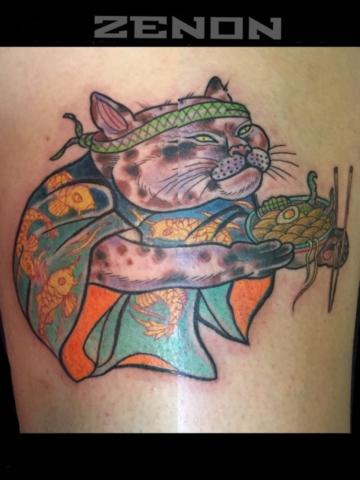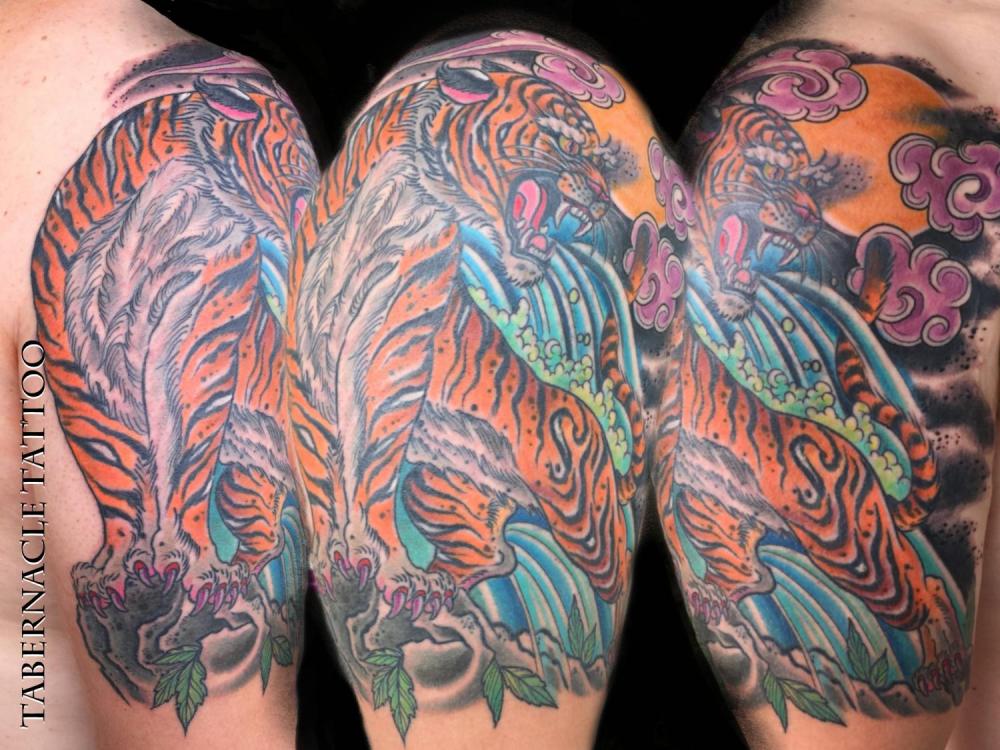Basic Science behind Tattooing
I figured I would deliver on my blog promise and discuss some mechanisms of tattooing and the science behind them. I'm sure many of the experienced tattooers and tattooies have at least heard many of these topics but I think this will establish a good break down into to the sweet science of tattooing from a new perspective. Just to preface my background a bit I have been getting tattooed by Zenon Pawelski for 7 years now and I have been privileged to be his friend enough that he would let me tag along to all the hot tattoo conventions like Villain Arts in Philadelphia, the National Tattoo convention in Orlando, Fl, just to name the most recent adventures. By osmosis I got the opportunity to meet some really awesome skin wizards and hear some of the best stories you wish you've heard. I recently started blogging for Tabernacle Tattoo in Tampa, Fl and really enjoyed discussing tattoo studies and drawings but I wanted a platform I could discuss some other aspects of tattooing that correspond with my interests and professional background. I studied political science and chemistry at the University of South Florida and I am a candidate for a PharmD degree at USF College of Pharmacy, hopefully through this platform I will get to learn and educate alike. Thank you all for reading Tattrick HQ!!! LET’S DO THIS!!!!
From the time I started hanging around tattoo shops I was fascinated with the machine mechanics. Watching the mini piston and listening to the buzz of the machines feels therapeutic to a degree. As I gained interest I inquired about the machines and what makes them tick, I found out that there were just a few basic parts involved to make the machine do its thing. The basics are somewhat easy almost anyone can make the basic motor (not advised or condoning it) apparatus with household parts. However, it takes a real technician to master the intricacies of the machine and to make it function at its optimal ability. Many of the artists I have been exposed to can just hear or touch a machine and know exactly how its going to perform. I admit I am a little jealous of their ability to understand something with such a simple interaction but I do understand it takes years to acquire these abilities, with that being said lets get back on track:
So a tattoo machine is essentially a little electromagnet, not much to it you can make one using a nail, some copper wire and a battery, if wrapped correctly this is called a solenoid. The tattoo machine utilizes the electromagnet the solenoid generates as a motor which pulls the pin down until it connects, driving the needle down into the skin. Once connection is made the pin fires back up and this rotational process of the magnetic field connecting-disconnecting-reconnecting happens rapidly to the tune of the harmonic buzz of the tattoo machine we are all so familiar with. Hopefully that paints a nice picture of the general mechanic of the machine, so lets talk about the cool stuff, the biochemistry behind the process. As the needle plunges into the skin many times a minute it injects ink or pigment into the skin, this is done by the needles breaking the skin and injecting the ink into the dermis layer which is just under the top layer (epidermis). So here we are, we've made the punctures onto the skin injected ink into the dermis layer and now this ink or pigment is just sitting there. Keep in mind the human immune system has been triggered during the action and now there is a response gathering in the areas of ink injection.
The natural immunoresponse of irritation, swelling and redness are typical for trauma to the skin these are signs that the white blood cells or soldiers of the immune system are on the scene. The white blood cells are actually trying to fight your tattoo and remove the foreign substance from your body. Normally, a foreign invader entering the body in a similar fashion would be introduced to a quick demise and circulated through the lymphatic system and ultimately out of the body.
How are tattoos permanent?
Essentially, the ink molecule is just too large for some of the white blood cells to consume. Some other WBC can ingest the ink but cannot process the molecule, so it can stay in the dermis. You can think of this as just a microscopic game of Pac-man the white blood cells are Pac-man and the ink molecules are the orbs he likes to eat. However, Pac-man can’t eat these orbs because they are too big and bulky for him to get his mouth around, so the orbs settle in and Pac-man doesn’t get to eat. After the WBC are unable to target the foreign invader the body will begin to heal the “wound” formed on the layers of skin. The image of the tattoo will go through additional healing process which includes the scabbing and crusting most of us have seen and finally we have the finished healed product. It’s pretty cool how many issues with the skin will be corrected over time, cuts, scars and burns may not completely disappear but do fade, but a proper tattoo that’s built to last can be forever.
Thank you for reading my first blog article. Let me know what you think. Have a great day! Ive included some tough tattoos from the tattoo shop sites I work on listed above for your viewing pleasure.
Resources:
https://inchemistry.acs.org/content/inchemistry/en/atomic-news/tattoo-ink.html










3 Comments
Recommended Comments